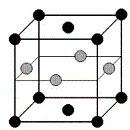Authors
Jan Honolka, Max-Planck-Institut für FestkörperforschungFollow
T. Y. Lee, Max-Planck-Institut fu¨r Festko¨rperforschung, Heisenbergstrasse 1, 70569 Stuttgart, Germany
K. Kuhnke, Max-Planck-Institut fu¨r Festko¨rperforschung, Heisenbergstrasse 1, 70569 Stuttgart, Germany
Axel Enders, University of Nebraska-LincolnFollow
Ralph Skomski, University of Nebraska-LincolnFollow
S. Bornemann, Ludwig-Maximilians-Universitat Munchen
S. Mankovsky, Ludwig-Maximilians-Universitat Munchen
J. Minar, Ludwig-Maximilians-Universitat Munchen
J. Staunton, University of Warwick, Coventry CV4 7AL, United Kingdom
H. Ebert, Ludwig-Maximilians-Universitat Munchen
M. Hessler, Max-Planck-Institut fu¨r Metallforschung, Heisenbergstrasse 13, 70569 Stuttgart, Germany
K. Fauth, Physikalisches Institut, Universitat Wu¨rzburg, Am Hubland, 97074 Wurzburg, Germany
G. Schutz, Max-Planck-Institut fu¨r Metallforschung, Heisenbergstrasse 13, 70569 Stuttgart, Germany
A. Buchsbaum, Institut fur Allgemeine Physik, Technische Universitat Wien, Wiedner Hauptstrasse 8-10/134, A 1040 Wien, Austria
M. Schmid, Institut fur Allgemeine Physik, Technische Universitat Wien, Wiedner Hauptstrasse 8-10/134, A 1040 Wien, Austria
P. Varga, Institut fur Allgemeine Physik, Technische Universitat Wien, Wiedner Hauptstrasse 8-10/134, A 1040 Wien, Austria
K. Kern, Max-Planck-Institut fu¨r Festko¨rperforschung, Heisenbergstrasse 1, 70569 Stuttgart, Germany
Date of this Version
2-13-2009
Abstract
The complex correlation of structure and magnetism in highly coercive monoatomic FePt surface alloys is studied using scanning tunneling microscopy, x-ray magnetic circular dichroism, and ab initio theory. Depending on the specific lateral atomic coordination of Fe either hard magnetic properties comparable to that of bulk FePt or complex noncollinear magnetism due to Dzyaloshinski-Moriya interactions are observed. Our calculations confirm the subtle dependence of the magnetic anisotropy and spin alignment on the local coordination and suggest that 3D stacking of Fe and Pt layers in bulk L10 magnets is not essential to achieve high-anisotropy values.



Comments
Published in PRL 102, 067207 (2009). Copyright © 2009 The American Physical Society. Used by permission.